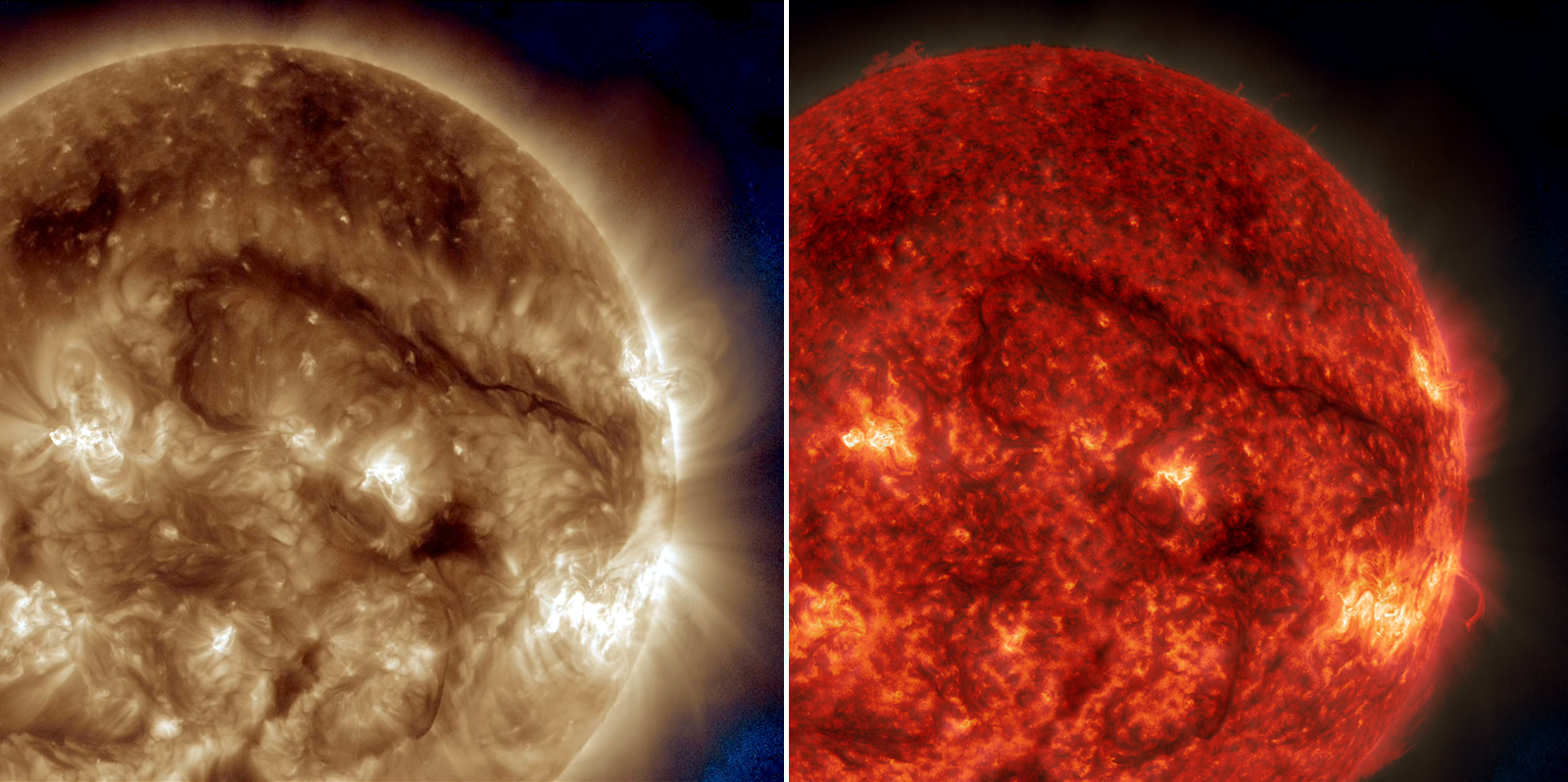Giant Sun 'Filament' Is 1 Million Miles Long (Video, Photos)

A spectacular new photo from a NASA spacecraft shows a gigantic tendril curving across the face of the sun.
The super-long sinuous filament on the sun, which was spotted by NASA's Solar Dynamics Observatory (SDO) on Sept. 30, extends for 1 million miles (1.6 million kilometers) — about 100 times the width of Earth, agency officials said. To put that into some more perspective, the sun's diameter is about 865,000 miles (1.4 million km).
Filaments are clouds of material that hang above the sun's surface. Though they can persist for weeks, filaments are unstable, sometimes exploding out into space, NASA officials said.
SDO observed the million-mile filament for several days, watching it spin around as the sun rotated.
"SDO captured images of the filament in numerous wavelengths, each of which helps highlight material of different temperatures on the sun," agency officials wrote in an image description Friday (Oct. 3). "By looking at any solar feature in different wavelengths and temperatures, scientists can learn more about what causes such structures, as well as what catalyzes their occasional giant eruptions out into space."
The $850 million SDO mission launched to Earth orbit in February 2010 to study the sun and its its variability. SDO is a key piece of NASA's "Living With a Star" program, which aims to help researchers better understand the sun-Earth system, and how various aspects of this system affect people's lives and society as a whole.
The sun is currently in an active phase of its 11-year activity cycle, which is known as Solar Cycle 24. Our star has thus fired off a number of powerful solar flares and superheated clouds of plasma known as coronal mass ejections (CMEs) recently. However, Solar Cycle 24 has been a quiet one overall; its peak has been the weakest "solar max" seen in a century or so, scientists say.
Breaking space news, the latest updates on rocket launches, skywatching events and more!
Follow Mike Wall on Twitter @michaeldwall and Google+. Follow us @Spacedotcom, Facebook or Google+. Originally published on Space.com.

Michael Wall is a Senior Space Writer with Space.com and joined the team in 2010. He primarily covers exoplanets, spaceflight and military space, but has been known to dabble in the space art beat. His book about the search for alien life, "Out There," was published on Nov. 13, 2018. Before becoming a science writer, Michael worked as a herpetologist and wildlife biologist. He has a Ph.D. in evolutionary biology from the University of Sydney, Australia, a bachelor's degree from the University of Arizona, and a graduate certificate in science writing from the University of California, Santa Cruz. To find out what his latest project is, you can follow Michael on Twitter.

